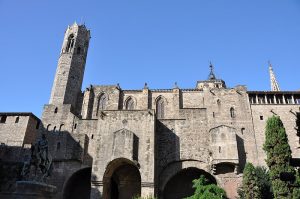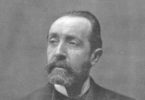Barcelona is a city with a long and detailed history; it thrived throughout both Roman and Medieval times. You can see both of these civilizations illustrated in the magnificent historical monument of the city of Barcino at Plaça Ramon Berenguer. It is an impressive square with a central equestrian statue of the Count of Barcelona.



Photo by Olli A via Visual Hunt
The history of the Plaça Ramon Berenguer el Gran dates back to the early fourth century BC. A Roman wall which had been reconstructed and strengthened using rubble from other ruined buildings was later topped by the Gothic Chapel of Santa Agatha. The square was then finally crowned in the middle by the impressive statue of Ramon Berenguer III the Great.
Table of Contents
Count Ramon Berenguer III
Ramon Berenguer III was Count of Barcelona between 1086 and 1131. He was born in France in 1082, the eldest son of Ramon Berenguer II. He succeeded his father at an early age, aided by his uncle until 1097 when he became the sole ruler. He soon showed great talent as a strategist and politician, forming many alliances throughout the kingdom. During his reign, he managed to extend the Catalan influence further on both sides of the Pyrenees. He was also a popular figure with the church, liberating many Christian slaves, imprisoned by Muslims in the surrounding areas. At the end of his life, he became a member of the knights Templar, dying soon after in 1131, when he was buried with great honors at the Santa Maria de Ripoll monastery.
Related article: Catalonia’s history museum
The Bronze statue



Photo by Catalan Art & Architecture Gallery (Josep Bracons) via VisualHunt.com
Looking stern yet solemn is the figure that stands in the heart of Plaça Ramon Berenguer. It was originally sculpted in plaster in 1888, by the architect Josep Llimona. It spent a long time being exhibited at the Palace of Fine Arts. After the death of Llimona, a replica of the bronze model was designed by Frederic Mares and then positioned in the Via Laietana.
During its time in the Palace of Fine Arts, the original model suffered a mishap, which led to the horse’s tail falling off. When the bronze replica was designed, it was up to Frederic Mares to also create a new tail. But the one he built was not received well by the public, and it created great controversy. People felt that it was too bushy and not in-keeping with the rest of the statue, which over the years they had grown to love.
Related article: An introduction to Roman Barcelona
Despite this small amount of uproar the statue has become one of the city’s most iconic features, combining a mixture of Catalan style with the old Roman and medieval eras.
Looking for an apartment to rent in the city? Le ShBarcelona help you find it.





















Leave a Comment